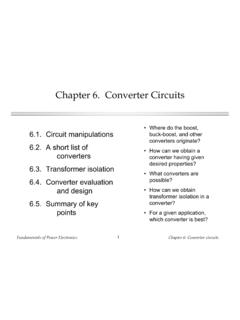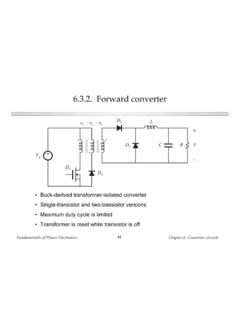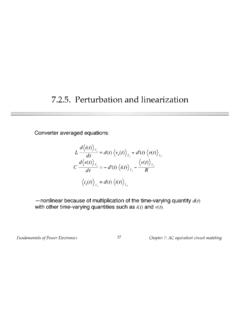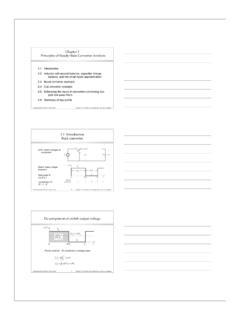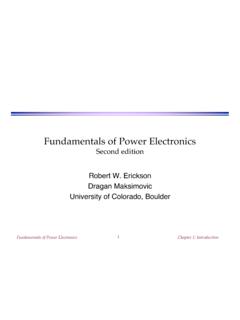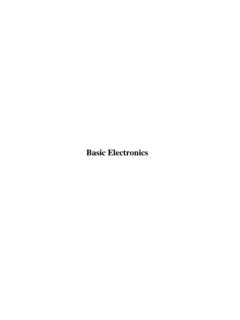Transcription of Chapter 3. Steady-State Equivalent Circuit Modeling ...
1 fundamentals of power ElectronicsChapter 3: Steady-State Equivalent Circuit Modeling , ..1 Chapter 3. Steady-State Equivalent CircuitModeling, losses , and The dc transformer Inclusion of inductor copper Construction of Equivalent Circuit How to obtain the input port of the Example: inclusion of semiconductor conductionlosses in the boost converter Summary of key pointsFundamentals of power ElectronicsChapter 3: Steady-State Equivalent Circuit Modeling , .. The dc transformer modelBasic equations of an idealdc-dc converter:Pin=PoutVgIg=VI( = 100%)V=M(D)Vg(ideal conversion ratio)Ig=M(D)IThese equations are valid in Steady-State . Duringtransients, energy storage within filter elements may causePin PoutSwitchingdc-dcconverterDControl inputPowerinputPoweroutputIgI+V +Vg fundamentals of power ElectronicsChapter 3: Steady-State Equivalent Circuit Modeling .
2 3 Equivalent circuits corresponding toideal dc-dc converter equationsPin=PoutVgIg=VIV=M(D)VgIg=M(D)I Dependent sourcesDC transformerPoweroutput+V I+ M(D)VgPowerinput+Vg IgM(D)IDControl inputPowerinputPoweroutput+V +Vg IgI1 : M(D) fundamentals of power ElectronicsChapter 3: Steady-State Equivalent Circuit Modeling , ..4 The DC transformer modelModels basic properties ofideal dc-dc converter: conversion of dc voltagesand currents, ideally with100% efficiency conversion ratio Mcontrollable via duty cycle Solid line denotes ideal transformer model, capable of passing dc voltagesand currents Time-invariant model (no switching) which can be solved to find dccomponents of converter waveformsDControl inputPowerinputPoweroutput+V +Vg IgI1 : M(D) fundamentals of power ElectronicsChapter 3: Steady-State Equivalent Circuit Modeling , ..5 Example: use of the DC transformer model1.
3 Original system2. Insert dc transformer model3. Push source through transformer4. Solve circuitV=M(D)V1RR+M2(D)R1 DRV1R1+ +Vg +V Switchingdc-dcconverter1 : M(D)RV1R1+ +Vg +V RM(D)V1M2(D)R1+ +V


